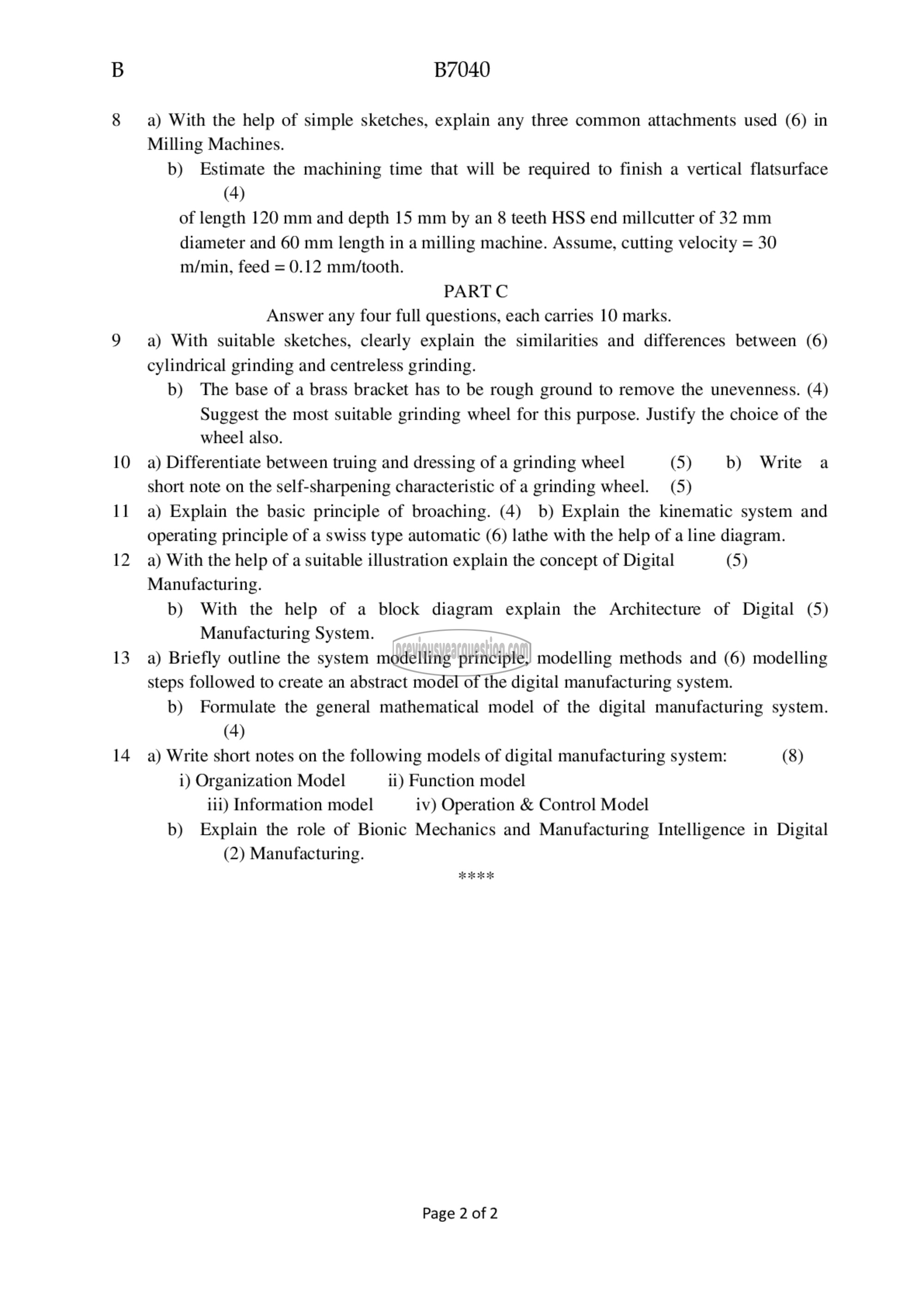APJ ABDUL KALAM TECHNOLOGICAL UNIVERSITY Previous Years Question Paper & Answer
Semester : SEMESTER 5
Subject : Machine Tools and Digital Manufacturing
Year : 2017
Term : DECEMBER
Branch : MECHANICAL ENGINEERING
Scheme : 2015 Full Time
Course Code : ME 303
Page:2
B B7040
8 9) With the help of simple sketches, explain any three common attachments used (6) in
Milling Machines.
b) Estimate the machining time that will be required to finish a vertical flatsurface
(4)
of length 120 mm and depth 15 mm by an 8 teeth HSS end millcutter of 32 mm
diameter and 60 mm length in a milling machine. Assume, cutting velocity = 30
m/min, feed = 0.12 mm/tooth.
PARTC
Answer any four full questions, each carries 10 marks.
9 a) With suitable sketches, clearly explain the similarities and differences between (6)
cylindrical grinding and centreless grinding.
b) The base of a brass bracket has to be rough ground to remove the unevenness. (4)
Suggest the most suitable grinding wheel for this purpose. Justify the choice of the
wheel also.
10 a) Differentiate between truing and dressing of a grinding wheel (5) b) Write a
short note on the self-sharpening characteristic of a grinding wheel. (5)
11 a) Explain the basic principle of broaching. (4) 9) Explain the kinematic system and
operating principle of a swiss type automatic (6) lathe with the help of a line diagram.
12 2) With the help of a suitable illustration explain the concept of Digital (5)
Manufacturing.
b) With the help of a block diagram explain the Architecture of Digital (5)
Manufacturing System.
13 a) Briefly outline the system modelling principle, modelling methods and (6) modelling
steps followed to create an abstract model of the digital manufacturing system.
b) Formulate the general mathematical model of the digital manufacturing system.
(4)
14 98) Write short notes on the following models of digital manufacturing system: (8)
i) Organization Model ii) Function model
111) Information model iv) Operation & Control Model
b) Explain the role of Bionic Mechanics and Manufacturing Intelligence in Digital
(2) Manufacturing.
Page 2 of 2
